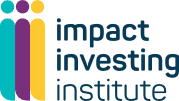

Ceniarth is a private family office focused on improving livelihoods in marginalised and vulnerable communities globally.
Founded in 2013 by Diane Isenberg, Ceniarth manages the assets of the Isenberg Family Charitable Foundation, as well as unrestricted family assets totalling more than $500 million. The firm’s team of twelve is based primarily in London with an additional presence in New York and San Francisco.
Managing director Greg Neichin talks about the organisation’s ‘impact first’ catalytic investment approach.
How did Ceniarth originally get into impact investing?
When we started this journey in 2013, Diane’s intention was to use both the family foundation assets and her personal assets to have long term impact among vulnerable, marginalised communities. In the beginning, we experimented with a wide range of impact investing modalities across the asset and risk/reward spectrum. This ranged from traditional ESG-style investing to higher-risk, direct lending to individual enterprises.
Over the years we found that the more conventional ‘finance-first’ allocations were simply not having the impact we wanted in the places we desired to serve. Consequently in 2018, Diane made a very public intention to move the vast majority of her and the foundation’s assets towards ‘impact first’ investments where money is flowing directly into targeted communities and is not constrained by a market- return expectation. Ever since, we’ve been steadily moving capital towards that approach.
What has that meant in practice in investment terms?
Because we aim to invest globally, the vast majority of our commitments are to fund managers and intermediaries that have local presence in markets to lend directly to enterprises or financial institutions.
This means making commitments to managers like Global Partnerships and MCE Social Capital that really put impact at the front of what they do, while we gradually divest out of our traditional ESG managers. We have a $500 million portfolio and about 40% of that is now in impact-first investments. We look to make 20-25 deals a year totalling $30-35 million addressing themes such as financial inclusion, SME finance, community development and agriculture. Currently there are around 115 names in the portfolio. Plus we have a small direct lending book.
What role does grant-making play in your strategy?
We write a few opportunistic grants when they are highly aligned and strategic to our work, but we are explicitly not a grant-making foundation. Our foundation’s distribution requirement is fulfilled almost entirely through the use of programme-related investments (PRI). Given that the amount of capital that we manage is small in comparison to the scope of challenges that we work on, Diane’s decision has been to focus on concessionary investing in marginalised communities and do it in a recyclable way so our capital could be multiplicative. That said, we certainly recognize the importance of grant makers to the work we do and invest in many organizations that are highly dependent on grant subsidy.

You mention ‘concessionary investing’ – what does that mean to you?
I use the term begrudgingly as I think it was crafted by the financial community to be pejorative towards those in the impact-first space! But this is basically money that commercial investors – and even commercial impact investors – are not willing to invest. It’s about accepting rates of return that wouldn’t satisfy the financial constraints of a commercial investor while still maintaining the capital value of our portfolio in real, post-inflation terms.
One of most compelling arguments Diane uses, particularly with family offices, is: “If you’re rich and all you do is get your money back, you’re still rich.” So if you ask to make a minimal return – rather than lots more money – you can have a tremendous amount of impact and recycle that money over time.
If there is a ‘unicorn’ that can deliver reasonable returns and good impact we do not turn that down. For example, Lendable is using predictive analytics in emerging market credit to produce good market-rate returns and good impact. There is also an affordable housing manager, Jonathan Rose, that has delivered stand-out financial returns and very solid impact. But on the flipside, our portfolio also includes PRIs carrying high risk of capital impairment or negligible returns but which are highly valuable because they can help fund proof of concepts, early-stage pilots, entry into high- risk markets, or first-loss positions to catalyze additional investment.
What is your operational structure? Does anyone advise you?
We rarely use advisers now. We did find them helpful when we were in that more conventional ESG space. But now that we are seeking impact in more remote places and more challenging communities, these are not really covered by advisers. The reality for most advisers is that their clients are not demanding impact-first, so there is not yet market pressure for them to do these ‘below-market return’ deals.
We have a team of 12 including investment officers that have come from really strong financial backgrounds. We do all our own due diligence on managers and intermediaries, and management and monitoring of the portfolio in-house. Diane is the sole decision-maker over all the assets so we do have a very different governance model from other foundations. Part of our ‘super-power’ is Diane’s conviction and autonomy to make decisions.
What frameworks do you have to make the decision between return and impact across multiple geographies and assets?
We have our bottom-line commercial constraint which is capital preservation in real terms and then try to optimise impact within that framework. We find impact comparisons solvable at a sector or thematic level and building clusters of opportunities in, say, microfinance, agri SME finance, or CDFIs [Community Development Financial Institutions] in the US. Where it gets murkier is trying to build some all- encompassing solution that is applicable in every place from rural Mississippi to urban India. We have yet to see the utility of making these types of cross contextual comparisons, so we continue to set thematic focuses that we feel good about and execute on those with a rough allocation strategy for each one.

Once you commit, are other investors coming alongside you in search of a market-rate return?
Certainly, we are helping to catalyse development institution capital. For example, in a lot of our recent big deals we have taken on a junior tranche while a development institution like the DFC in the US, CDC Group in the UK or FMO in the Netherlands has come in on top of us in a lower-risk senior tranche.
In our work in the US, particularly with CDFIs where there are decades of supporting data, there are instances where our junior tranche money is basically allowing a more traditional regional or national bank to come in with a loan.
To deliver the impacts we’re seeking, we are happy to help catalyse other institutions to take a lower-risk return to deploy large pools of capital because nobody else is going to write that cheque. However, we are definitely not in the business of deploying lower returning money to simply subsidize the return desires of a commercial investor.
What would you say to foundations hesitant to step into this impact-first space?
The conservative case is that there is now a pretty good track record in the impact investing world – certainly behind the finance-first side of things. So it is possible to align your portfolio with your values as foundation and at least make sure your endowment isn’t working against your mission.
But this is a low bar for success and not nearly ambitious enough given the scope of challenges that the world faces.
Why do foundations exist except to execute on their philanthropic mission? Start using the full breadth of your capital to have an impact on the problems you were founded to address.

